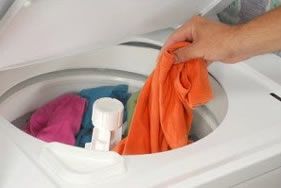Brand Loyalty Among U.S. Hispanic Consumers - Separating Truth from Fiction.
“U.S. Hispanics are brand loyal”. This statement is usually followed up with “That’s why you need to get them to buy your product when they’re young or recently immigrated since they’ll be customers for life”. Really? That sounds great! All I have to do is get them to try and like my product once and then man the cash register awaiting a steady flow of repeat business…
As you probably know by now, here at ThinkNow Research we don’t traffic in untested assumptions. We’ve been surprised by the diversity and evolution of the U.S. Hispanic market too many times to assume that yesterday’s truths still hold today. Therefore, we set out to test this sacred cow of U.S. Hispanic market “knowledge” by asking a nationally representative sample of 1,000 U.S. Hispanic consumers about their brand purchasing behaviors across a number of categories and compared their answers to a control group of 500 non-Hispanic consumers.

First the set-up… we zeroed in on seven product categories: bottled water, laundry detergent, toilet tissue, pasta sauce, dishwashing soap, orange juice and toothpaste. Then we asked a series of questions about buying specific brands within each of those groups… and how they would respond if their ‘favorite’ brand was not on the shelf when they were shopping. Here’s what we found out…
SO, ARE HISPANICS BRAND LOYAL?
BRAND LOYALTY FACTOID . . .
Brand loyalty appears to be stable across all Hispanic consumers segments. When comparing brand loyalty for the seven product groups across demographics like Gender, Age, Acculturation, Geography and HHI, we noticed that there was remarkable consistency. Hispanic men and women had the same level of loyalty toward the products groups. The same applied to younger vs. older, less-acculturated vs. more-acculturated and so on. And though there were minor differences, they almost never were more than 2-3 percentage points apart.
In general, Hispanics and non-Hispanics rank about the same when it comes to brand loyalty. When asked if they ‘always’ buy the same brands (across the seven selected products), 30% of Hispanics said they did vs. 29% of non-Hispanics. If we look at Top-2 Box answers, ‘always‘ and ‘mostly‘ was chosen 56% of the time by U.S. Hispanics. That makes them brand loyal right? Well, yes but not more so than non-Hispanics who chose those options 58% of the time.
In fact, when looked at individually, the 3 products that rated highest in Top-2 Box brand loyalty were the same across both groups:
Hispanics
- Toothpaste: 63%
- Laundry detergent: 62%
- Toilet tissue: 61%
Non-Hispanics
- Laundry detergent: 65%
- Toilet tissue: 64%
- Toothpaste: 63%
Both groups even agreed on what product they are least brand loyal to – bottled water – with both groups saying they “buy whatever is cheapest, regardless of brand” about 15% of time. Dasani, Aquafina… are you listening?
ARE THERE ANY DIFFERENCES THEN?
Yes, when their favorite brand of product is NOT on the shelf, Hispanic consumers will respond differently than non-Hispanics.
When asked what they would do if the brand they usually buy was not available where they normally shop 23% of Hispanics reported they will go to another store to buy their favorite brand vs. 16% of non-Hispanics. Is this the Hispanic brand loyalty we’ve been told about? Perhaps, but if we add another group of respondents to the mix, those who said they would come back another day to get their favorite brand, 20% of Hispanics vs. 22% of non-Hispanics, the brand loyalty difference narrows.
Not surprisingly, the three categories for which both groups would endure this kind of inconvenience are the top three they rated highest in Top-2 box loyalty: toothpaste, laundry detergent and toilet tissue.
HISPANICS AND BRAND LOYALTY CONCLUSION
As much as we want to contrast Hispanic consumers to non-Hispanic consumers, at least when it come to brand loyalty across common household goods, there are a lot more similarities than differences.
One final note… there is a subset of both groups (10-11%) who said when their favorite brand is not on the shelf, they will step out of their comfort zone and try a new brand. Ahh, hope for the others...
We are pleased to offer free of charge the full contents of the report referenced in this blog entry. Please click the link below to get your copy now.